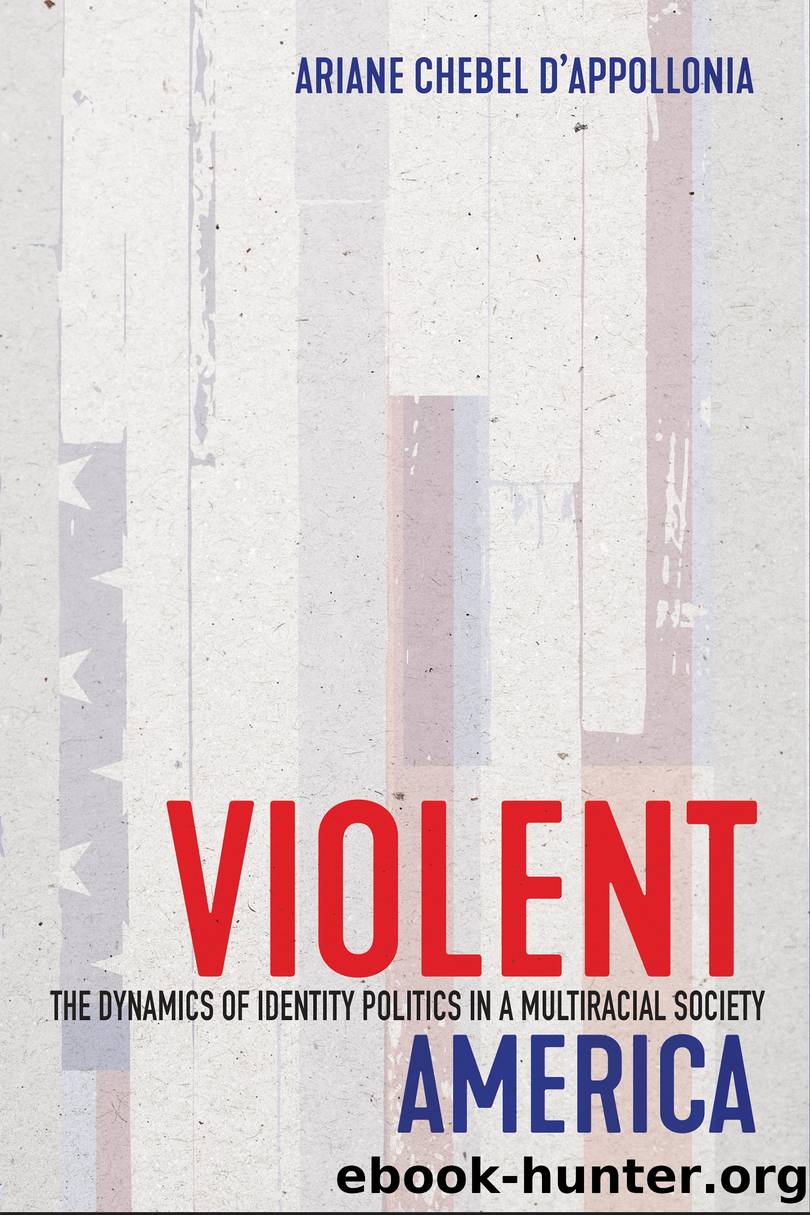Violent America by Ariane Chebel d'Appollonia;

Author:Ariane Chebel d'Appollonia;
Language: eng
Format: epub
Publisher: Lightning Source Inc. (Tier 3)
So, to Whom Do Black Lives Actually Matter?
Do frustration and anger provide a solid ground on which to base coalitions in the search for the common good? The interaction between centripetal and centrifugal forces between and within different minority groups in America is, somewhat ironically perhaps, well-illustrated by the BLM movement itself. It generates incentives for an unprecedented large mass mobilization and, conversely, the conditions for a further fragmentation of intergroup solidarity.
What began as a post on Facebook and then a hashtag on other social media a few years ago has now become the largest social movement in US history. The BLM movement first emerged in reaction to George Zimmermanâs 2013 acquittal for the death of Trayvon Martin. It was created by three womenâAlicia Garza, Patrisse Cullors, and Opal Tometiâwho, in opposition to the male-dominated hierarchical style of leadership, intended to give special attention to the needs of Black women, Black queers, and Black transgendered.64 According to Garza, âBlack Lives Matter is a unique contribution that goes beyond extrajudicial killings of Black people by police and vigilantes. It centers those that have been marginalized within Black liberation movements.â65
Since its creation, BLM has sought to address a broad range of issues, such as a lack of economic justice and community control, and an inadequate protection of civil rights and liberties, as well as demanding a more effective fight against persistent racial prejudice and racial practices. The movement gained momentum during the riots that took place in Ferguson in 2014 after the killing of Michael Brown and morphed into a large protest movement after the killing of Eric Garner, Michael Brown, and numerous others. BLM protests peaked on June 6, 2020, when half-a-million people demonstrated over the death of George Floyd in nearly 550 places across the country. By late 2020, BLM encompassed over thirty chapters in the United States and abroad, including a dozen Black-led organizations, as well as affiliated non-Black groups. Support for BLM increased by nearly as much as it had over the previous two years in the weeks after the death of Floyd, with more than half of American voters (52 percent) supporting the movement in early June compared to the 28 percent who opposed it.66
BLM protests helped reframe American politics in 2020. Issues of racial violence, discrimination, and violation of basic rights were at the forefront of the 2020 presidential debate. In a notable change of attitude, by the summer of 2020 Americans were now more likely to say that the protests will help (53 percent) rather than hurt (34 percent) bringing about racial justice and equality.67 According to a Washington Post-Schar School Poll conducted in June 2020, 69 percent of Americans believed the death of Floyd reflects a âbroader problem in the way black people are treated by policeâ (up from 43 percent in 2014, after Brownâs death).68 City councils in many cities pledged to dismantle or reform their police department. New laws banned chokeholds. Measured in terms of levels of support and number of protesters, by the end of 2020 BLM had already achieved more than all the civil rights marches in the 1960s.
Download
This site does not store any files on its server. We only index and link to content provided by other sites. Please contact the content providers to delete copyright contents if any and email us, we'll remove relevant links or contents immediately.
The Secret History by Donna Tartt(18157)
The Social Justice Warrior Handbook by Lisa De Pasquale(11951)
Thirteen Reasons Why by Jay Asher(8451)
This Is How You Lose Her by Junot Diaz(6435)
Weapons of Math Destruction by Cathy O'Neil(5829)
Zero to One by Peter Thiel(5488)
Beartown by Fredrik Backman(5353)
The Myth of the Strong Leader by Archie Brown(5237)
The Fire Next Time by James Baldwin(5016)
How Democracies Die by Steven Levitsky & Daniel Ziblatt(4953)
Promise Me, Dad by Joe Biden(4908)
Stone's Rules by Roger Stone(4857)
100 Deadly Skills by Clint Emerson(4690)
A Higher Loyalty: Truth, Lies, and Leadership by James Comey(4550)
Rise and Kill First by Ronen Bergman(4545)
Secrecy World by Jake Bernstein(4388)
The David Icke Guide to the Global Conspiracy (and how to end it) by David Icke(4379)
The Farm by Tom Rob Smith(4323)
The Doomsday Machine by Daniel Ellsberg(4245)
